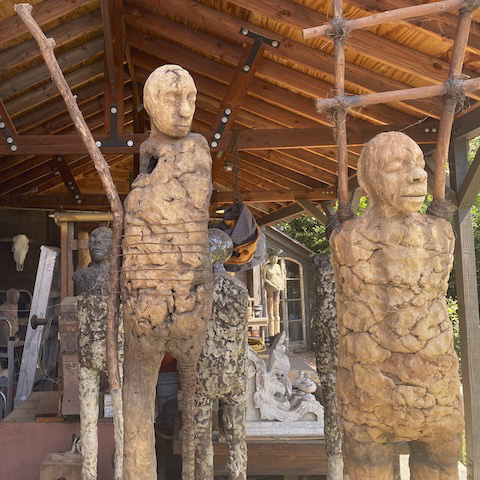Welcome to my studio. Walking up the steps, past a tall saguaro cactus, I am greeted by a pair of large doors, aged and weathered from decades of exposure to wind, rain and sun. Over time, the exterior of the simple one-story wood frame structure has turned a deep red-brown like ancient sun-drenched skin. It sits next to a rose garden; two pomegranate trees flank the west side. The entrance is secured with a simple hasp and lock.
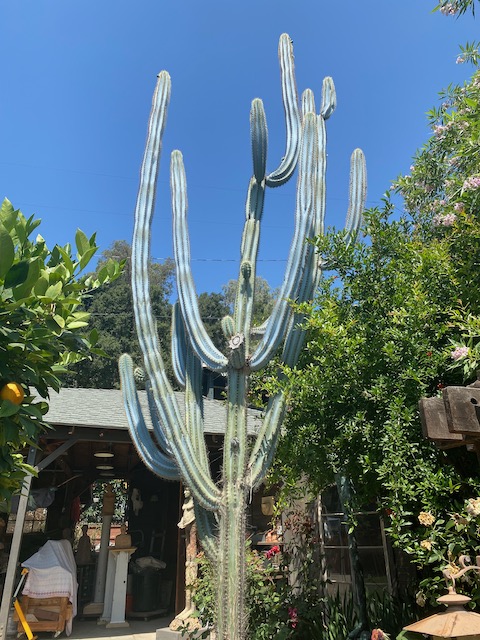
My studio is a wonderful part of my life and is filled with remnants of unfinished work, parts of sculptures yet to find their place, finished works, and the tools and equipment needed to create in wood, clay, and metal.
The plain exterior of aged wood siding sits in strong contrast to the visual intensity of the interior, where colors and textures vary greatly. The idea of inner and outer plays a significant role in my thinking and work; that is, how the outside of structures relates to the visual arrangement within the inner space, and how the insides are utilized or experienced. This duality reminds me of something in Paul’s letter to the Corinthians: “But we have this treasure in earthen vessels, that the surpassing greatness of the power may be of God and not from ourselves.”
I believe Paul was referring to “earthen vessels” as a metaphor for our physical bodies, but I find it true as well for other kinds of containers that carry within them the potential for life giving power. This power for life affirming creativity is more than what is possible from the physical space or people that occupy it. This “treasure” seems to be a life force, a power that allows for things to be made, for ideas to be developed, and for interactions between matter and spirit to transcend the simple work of one’s hands. The outer container has an earthen quality that keeps it grounded while the inner space has the potential for a greatness that qualifies it as “treasure,” infused with the spiritual energy of The Creator.
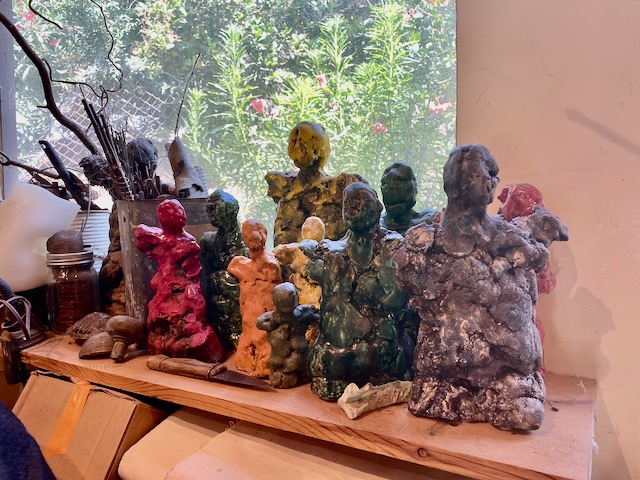
As I enter this studio with its quiet aging exterior, I cross a threshold into a room that works in humble service to the making of art. In there (as in us) dwells a creative spirit that is capable of working together to make something meaningful. It is not a kind of magic; it does not happen outside the disciplines of artistic practice but rather through them. Nothing of significant value happens outside the process of hard work, dedication and consistency, but the results often make profound leaps beyond the artist’s efforts.
Many young artists ask me how they can sustain a studio practice for a lifetime. I tell them that one of the crucial elements for a successful life as an artist is to enter one’s studio with humility, with the full realization that the Creator will meet us within the “earthen vessel” with a “surpassing greatness” that will surprise us and challenge us as we work at our practice year after year.
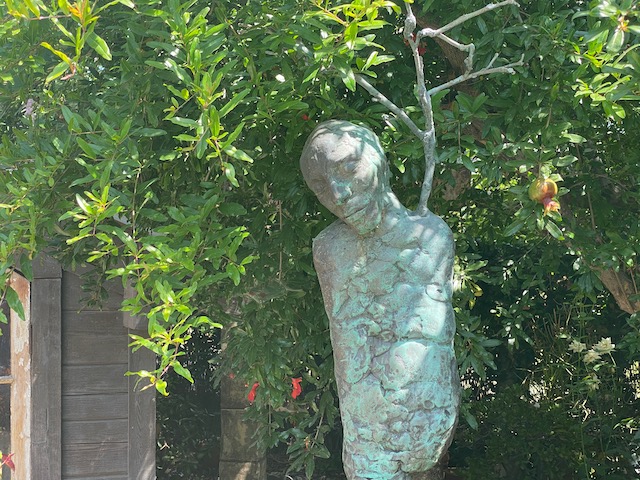
In light of this wonderful awareness of spiritual support in the studio, there is still the difficulty of simply getting to work. As I walk out my back door and head up to the studio, I am confronted with a myriad of other projects that “need” to be done: trees and shrubs that should be trimmed, areas of the garden that could use some attention, the pond filter that should be cleaned—on and on the voices go. If I am not careful, I can quickly feel overwhelmed by a long laundry list of other things to do: emails to attend to, phone calls to return, people to connect with, teaching and administrative duties, and so on. Quieting the internal “you should” voices is a much-needed discipline I must practice before even entering the studio. My studio time is essential to balancing other areas of life.
These “voices” have a tendency to speak on behalf of all that has not been taken care of in my life. I have found that certain materials and processes help to quiet my mind. The one that is most effective is getting my hands in wet clay. It is the one studio activity that allows my mind to engage in a place of silence and stillness. Something profound happens to me when my skin touches the clay. I become tuned to what I should be about; my “inner and the outer” become aligned. I find peace and comfort within myself. This deep connecting is vital for studio longevity. Artists must find the materials and processes to which they feel most connected in order to develop a healthy studio work pattern.
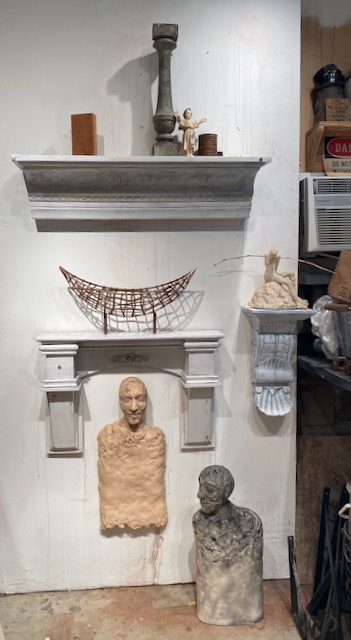
Inertia, or “getting started again,” is another common struggle artists experience. Inertia is the act of trying to find where I left off and stepping back into the creative energy from the previous studio session. When I was a young artist, other artists advised me to just show up, clock in and get going, as though it was another day at work. This advice reminded me too much of my difficult years of working on the family ranch and in construction. It occurred to me that if my studio is like an earthen vessel, with the potential for engaging in the “surpassing greatness” of the power of the Creator, then I needed to discover a different way to enter my space and find my way back into “the creative flow.”
Over a period of years, I became aware that I needed a ritual of entrance into my studio—a reliable way to enter my work that seemed natural, not contrived. What I noticed was that if I did a bit of cleaning up in the studio by touching the tools and materials as I put things away, I would find myself back at work without even realizing it. This “cleaning ritual” has become so natural that I am unaware of it most of the time. At the end of a work session, I leave tools out, floor unswept and materials where they were last used. On a good day, I re-enter the space, put a few things away, sweep a little, move something, and then, without being consciously aware of it, I am back to work. On the more difficult days, I clean a little longer and perhaps reorganize tools and supplies. On a really tough day, I work on finishing the remodel of the studio that began many years ago. Each step of this process keeps me in the space and near the work until I am making sculptures again.
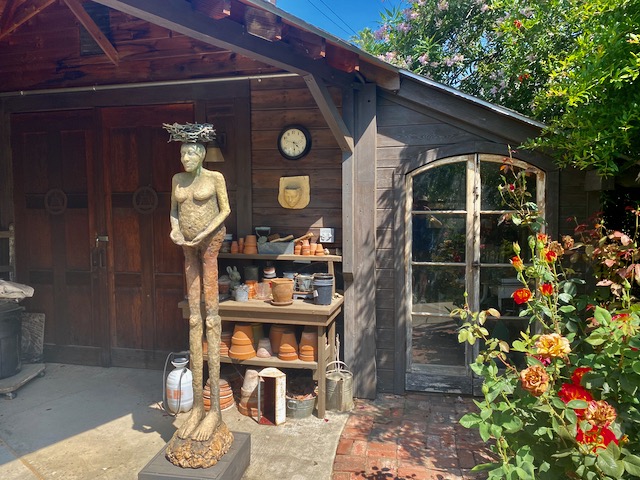
These rituals of entering the space with humility, expecting the spirit to participate in the creative process of making, quieting the “you should” voices, and reconnecting with the flow of previous studio sessions are disciplines that require us to be alive to the moments we have, paying close attention to the ways we move, think, pray and work as artists. They are not formulas or prescriptions for success, but are examples of how I have navigated a vital and consistent studio practice that is deeply rooted in my spirituality over a number of decades. They are not a recipe for everyone. Every artist must closely examine studio practice and identify where it is not thriving.
I encourage you to pray and seek for insight as to how you might alter your current way of working. Consider what rituals within your practice need to be more fully activated. Know that by seeking the quietness of the spirit as you cross the limen and enter the studio, you are entering a sacred place.
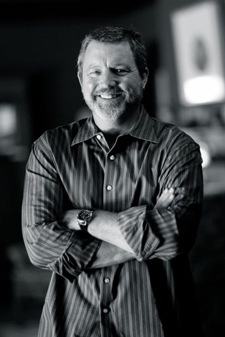
William Catling is a sculptor, painter, Professor of Art, and Department of Art Chair at Azusa Pacific University, Azusa, California. Website: williamcatling.com

